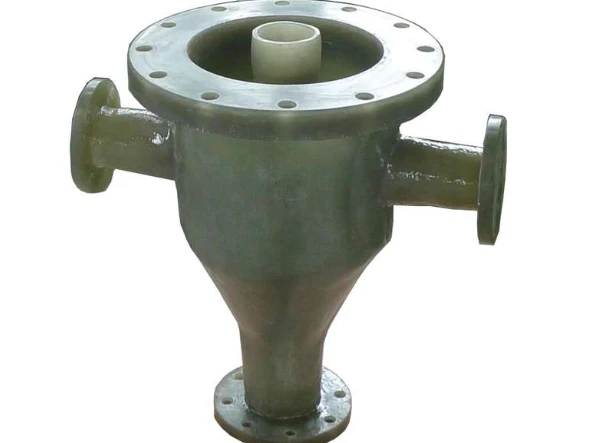
-
 Afrikaans
Afrikaans -
 Albanian
Albanian -
 Amharic
Amharic -
 Arabic
Arabic -
 Armenian
Armenian -
 Azerbaijani
Azerbaijani -
 Basque
Basque -
 Belarusian
Belarusian -
 Bengali
Bengali -
 Bosnian
Bosnian -
 Bulgarian
Bulgarian -
 Catalan
Catalan -
 Cebuano
Cebuano -
 China
China -
 China (Taiwan)
China (Taiwan) -
 Corsican
Corsican -
 Croatian
Croatian -
 Czech
Czech -
 Danish
Danish -
 Dutch
Dutch -
 English
English -
 Esperanto
Esperanto -
 Estonian
Estonian -
 Finnish
Finnish -
 French
French -
 Frisian
Frisian -
 Galician
Galician -
 Georgian
Georgian -
 German
German -
 Greek
Greek -
 Gujarati
Gujarati -
 Haitian Creole
Haitian Creole -
 hausa
hausa -
 hawaiian
hawaiian -
 Hebrew
Hebrew -
 Hindi
Hindi -
 Miao
Miao -
 Hungarian
Hungarian -
 Icelandic
Icelandic -
 igbo
igbo -
 Indonesian
Indonesian -
 irish
irish -
 Italian
Italian -
 Japanese
Japanese -
 Javanese
Javanese -
 Kannada
Kannada -
 kazakh
kazakh -
 Khmer
Khmer -
 Rwandese
Rwandese -
 Korean
Korean -
 Kurdish
Kurdish -
 Kyrgyz
Kyrgyz -
 Lao
Lao -
 Latin
Latin -
 Latvian
Latvian -
 Lithuanian
Lithuanian -
 Luxembourgish
Luxembourgish -
 Macedonian
Macedonian -
 Malgashi
Malgashi -
 Malay
Malay -
 Malayalam
Malayalam -
 Maltese
Maltese -
 Maori
Maori -
 Marathi
Marathi -
 Mongolian
Mongolian -
 Myanmar
Myanmar -
 Nepali
Nepali -
 Norwegian
Norwegian -
 Norwegian
Norwegian -
 Occitan
Occitan -
 Pashto
Pashto -
 Persian
Persian -
 Polish
Polish -
 Portuguese
Portuguese -
 Punjabi
Punjabi -
 Romanian
Romanian -
 Russian
Russian -
 Samoan
Samoan -
 Scottish Gaelic
Scottish Gaelic -
 Serbian
Serbian -
 Sesotho
Sesotho -
 Shona
Shona -
 Sindhi
Sindhi -
 Sinhala
Sinhala -
 Slovak
Slovak -
 Slovenian
Slovenian -
 Somali
Somali -
 Spanish
Spanish -
 Sundanese
Sundanese -
 Swahili
Swahili -
 Swedish
Swedish -
 Tagalog
Tagalog -
 Tajik
Tajik -
 Tamil
Tamil -
 Tatar
Tatar -
 Telugu
Telugu -
 Thai
Thai -
 Turkish
Turkish -
 Turkmen
Turkmen -
 Ukrainian
Ukrainian -
 Urdu
Urdu -
 Uighur
Uighur -
 Uzbek
Uzbek -
 Vietnamese
Vietnamese -
 Welsh
Welsh -
 Bantu
Bantu -
 Yiddish
Yiddish -
 Yoruba
Yoruba -
 Zulu
Zulu
underground fiberglass tanks
Underground Fiberglass Tanks A Sustainable Solution for Storage
As environmental concerns become increasingly pressing, industries are turning to innovative solutions that mitigate risks while maximizing efficiency and safety. Among these solutions, underground fiberglass tanks have emerged as a robust and reliable option for the storage of various liquids, from water and oils to chemicals. This article delves into the benefits, applications, and considerations of using underground fiberglass tanks.
What Are Underground Fiberglass Tanks?
Underground fiberglass tanks are storage units made from fiberglass-reinforced plastic (FRP), a composite material that provides exceptional strength and chemical resistance. These tanks are primarily designed for underground installation, effectively utilizing space while minimizing environmental exposure. Unlike traditional steel tanks, fiberglass tanks resist rust and corrosion, making them a long-lasting solution in many industries.
Advantages of Underground Fiberglass Tanks
1. Corrosion Resistance One of the primary advantages of fiberglass tanks is their resistance to corrosion. This characteristic is essential for storing caustic and corrosive substances, as it prevents leaks and ensures the integrity of the stored materials.
2. Lightweight Yet Strong Fiberglass tanks are significantly lighter than concrete or metal tanks, which facilitates easier transportation and installation. Despite their lightweight nature, they possess remarkable strength, making them suitable for withstanding external pressures when buried underground.
3. Versatility These tanks can store a wide range of liquids, including fuel, wastewater, chemicals, and potable water. This versatility makes them ideal for various applications, from commercial and industrial uses to residential setups.
4. Environmental Protection The underground installation of fiberglass tanks helps in reducing the risk of contamination to the surrounding environment. With proper installation and maintenance, these tanks can significantly lower the risk of leaks that could pollute soil and groundwater.
5. Cost-Effectiveness While the initial investment for fiberglass tanks may be higher than other materials, their longevity and reduced maintenance needs often result in lower total lifecycle costs. Additionally, their resistance to degradation can lead to fewer replacements over time.
underground fiberglass tanks

Applications of Underground Fiberglass Tanks
Underground fiberglass tanks have found numerous applications across various sectors, including
- Petroleum and Fuel Storage Many gas stations and fueling depots utilize fiberglass tanks to store gasoline and diesel. Due to their resistance to corrosion, they are ideal for containing fuels without the risk of chemical breakdown.
- Wastewater Treatment In municipal and industrial wastewater treatment plants, fiberglass tanks are employed to store and treat wastewater. Their durability ensures that they can handle harsh chemicals commonly found in wastewater without compromising structural integrity.
- Chemical Storage Industries that require the storage of hazardous materials often opt for fiberglass tanks due to their chemical resistance, which protects against leaks and environmental hazards.
- Agriculture Farmers use underground fiberglass tanks for storing fertilizers, herbicides, and other agricultural chemicals. Their ability to resist environmental elements ensures the safe storage of these substances.
Considerations
While underground fiberglass tanks offer numerous advantages, certain considerations must be taken into account. Proper installation is crucial to prevent movement and ensure stability, particularly in areas prone to groundwater fluctuations. Additionally, regular maintenance and inspections are necessary to detect possible wear and tear. It is essential to adhere to local regulations governing tank installation, maintenance, and monitoring to ensure compliance and safety.
Conclusion
Underground fiberglass tanks represent a sustainable and efficient solution for liquid storage across a multitude of industries. Their unique advantages, including corrosion resistance, strength, and environmental safety, make them an attractive option for modern storage challenges. As industries continue to embrace sustainable practices, the use of these tanks is likely to grow, contributing to a greener and safer future.
Latest news
-
Exploring the Benefits of Top Hammer Drifter Rods for Enhanced Drilling PerformanceNewsJun.10,2025
-
High-Precision Fiberglass Winding Machine for GRP/FRP Pipe Production – Reliable & Efficient SolutionsNewsJun.10,2025
-
FRP Pipes & Fittings for Shipbuilding - Corrosion-Resistant & LightweightNewsJun.09,2025
-
Premium FRP Flooring Solutions Durable & Slip-ResistantNewsJun.09,2025
-
Premium Fiberglass Rectangular Tanks Durable & Lightweight SolutionNewsJun.09,2025
-
Tapered Drill String Design Guide Durable Performance & UsesNewsJun.09,2025









